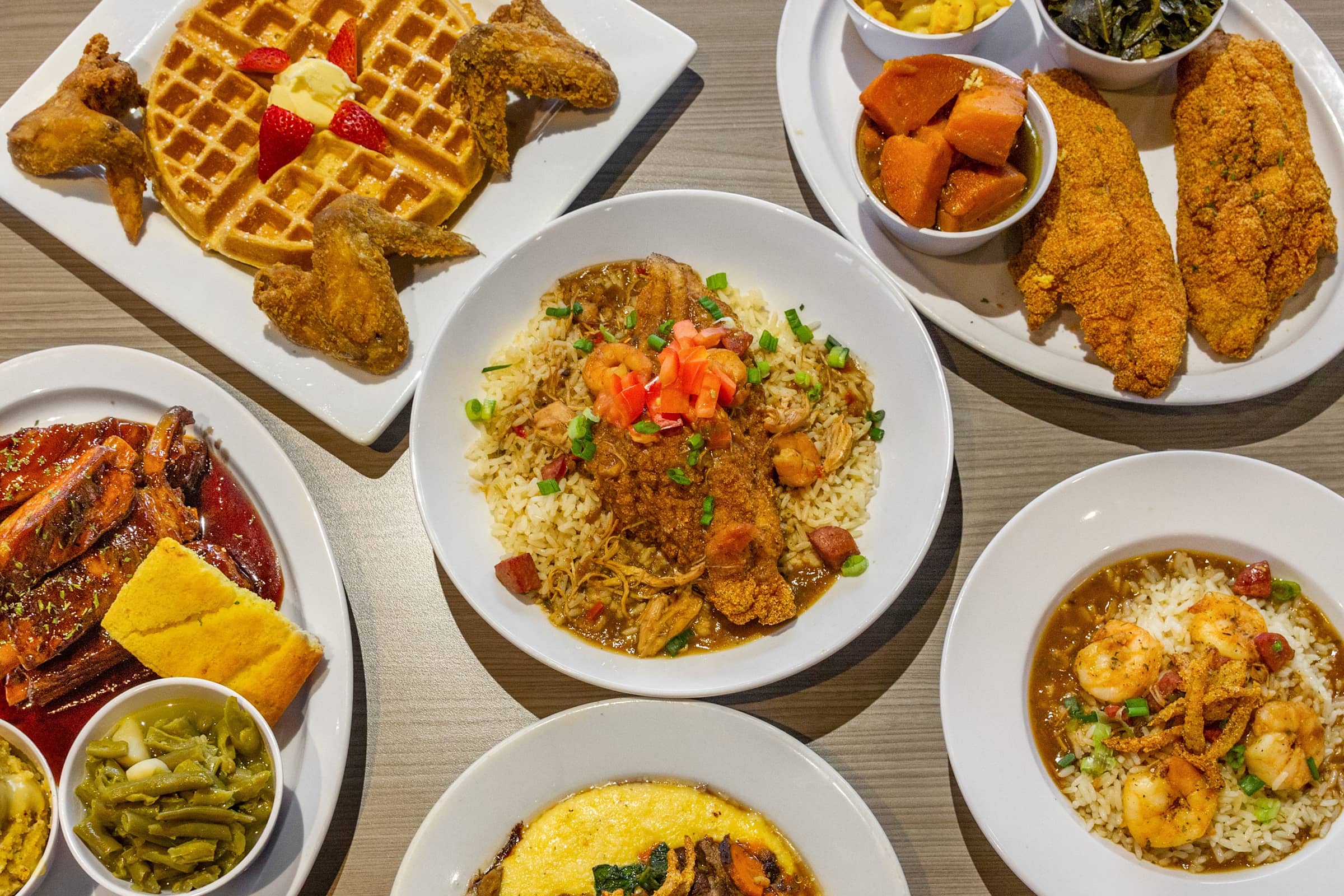Around Me Food Places explores the burgeoning world of location-based food discovery. This investigation delves into user motivations, data sources powering these searches, and the crucial role of effective presentation and personalization in enhancing the user experience. We examine how technology helps users find nearby restaurants, considering factors like cuisine, price, and user reviews.
From understanding the diverse needs of users seeking a quick bite to a fine dining experience, to analyzing the strengths and weaknesses of various data APIs, this exploration covers the entire spectrum of the “around me food places” search. We’ll look at how data is gathered, processed, and presented to provide users with the most relevant and helpful information possible, including strategies for filtering and personalizing results to match individual preferences.
Understanding the “Around Me Food Places” Search

Source: nearmehours.com
The phrase “around me food places” reveals a user’s immediate need for dining options in their vicinity. This seemingly simple search query masks a variety of underlying motivations, influencing the type of establishment sought and the decision-making process.
User Motivations and Food Establishment Types, Around me food places
Users searching for “around me food places” are driven by diverse needs. Some may be looking for a quick, inexpensive lunch, while others seek a fine-dining experience. The type of establishment desired varies greatly. Users might be searching for fast food restaurants, casual eateries, fine-dining establishments, cafes, bars serving food, or even food trucks. Factors influencing restaurant choice include price, cuisine type, proximity, reviews, ambiance, and dietary restrictions.
For instance, a busy professional might prioritize speed and convenience, opting for a nearby fast-food chain or a quick-service restaurant. A family celebrating an anniversary, on the other hand, may prioritize ambiance and quality, selecting a fine-dining restaurant with good reviews. A tourist exploring a new city might rely on proximity and variety, exploring different cuisines offered in the immediate area.
A person with dietary restrictions would need establishments catering to their specific needs (vegetarian, vegan, gluten-free, etc.).
Data Sources for Locating Nearby Food Establishments
Several data sources provide information on nearby restaurants. Each has its strengths and weaknesses, impacting data acquisition strategies.
- Google Maps API: Offers extensive coverage, accurate location data, user reviews, and business details. However, it may lack detailed information on smaller, independent restaurants.
- Yelp API: Known for its user reviews and comprehensive business information, including photos and menus. However, its coverage may be less extensive in certain areas compared to Google Maps.
- OpenTable API: Specializes in restaurant reservations, providing real-time availability and booking functionality. Its data focuses on restaurants that accept reservations and may not include all establishments.
A robust data acquisition strategy would combine these sources. Google Maps API can provide a broad base of restaurants, while Yelp API adds richer details and user reviews. OpenTable API supplements the data with reservation information for eligible establishments. Factors to consider when selecting a data source include accuracy, geographic coverage, data completeness, cost, and API limitations.
Presenting Food Place Information Effectively
Effective presentation is crucial for user experience. Clear, concise information, coupled with intuitive visual aids, enhances decision-making.
| Restaurant Name | Address | Cuisine | Rating | Price Range |
|---|---|---|---|---|
| The Italian Place | 123 Main St | Italian | 4.5 | $$ |
| Spicy Tacos | 456 Oak Ave | Mexican | 4.0 | $ |
| Burger Bliss | 789 Pine Ln | American | 3.8 | $ |
| Sushi Heaven | 101 Maple Dr | Japanese | 4.7 | $$$ |
Restaurant locations can be visually represented on a map using markers, with color-coding or size variations to indicate ratings or price ranges. User reviews and ratings can be displayed as star ratings, along with a summary of positive and negative feedback. Restaurant listings can be organized by distance, cuisine, price range, rating, or a combination thereof, allowing for customized sorting based on user preferences.
Local eateries offer diverse culinary experiences, from bustling street food stalls to upscale restaurants. However, the resourcefulness required to find sustenance in such environments pales in comparison to the challenges faced by Kong, whose off-grid survival with his wife, as detailed in this article kong survival off grid living wife , highlights a stark contrast. Ultimately, access to food, whether readily available or arduously foraged, remains a fundamental aspect of human existence.
Filtering and Personalization of Search Results
Filtering and personalization enhance the relevance and usability of search results. Users should be able to filter by cuisine type, price range, dietary restrictions (vegetarian, vegan, gluten-free, etc.), opening hours, and other preferences.
Personalization can be achieved by analyzing user history and preferences. For example, if a user frequently searches for Italian restaurants, the system can prioritize Italian restaurants in future searches. Missing or incomplete data can be handled by flagging listings with incomplete information or providing fallback mechanisms, such as displaying a message indicating limited information. Potential biases can be mitigated through careful data selection, algorithm design, and regular audits to ensure fairness and inclusivity.
Enhancing the User Experience
A user-friendly interface is crucial. Clear search bars, intuitive filters, and visually appealing presentation of results are essential. Real-time updates on restaurant availability, menus, and online ordering capabilities enhance convenience. Visual cues, such as color-coded ratings or price indicators, aid quick decision-making. If no relevant results are found, the system should provide helpful suggestions, such as broadening search criteria or exploring nearby areas.
Closure: Around Me Food Places

Source: grubhub.com
The quest for the perfect meal near you is significantly impacted by the technology behind “around me food places” searches. This exploration highlights the complex interplay of user intent, data aggregation, and effective presentation. By understanding these elements, developers can create more intuitive and personalized experiences, ultimately transforming how people discover and enjoy their favorite local eateries. The future of food discovery is clearly tied to innovative solutions that enhance user experience and leverage the power of data to connect people with the perfect meal, right around the corner.
